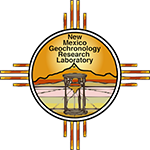Pre-Cordilleran rocks of western North America are predominantly composed of inboard, more stratigraphically coherent assemblages and more outboard assemblages with tectonostratigraphic histories obscured by extensive deformation, magmatism, and metamorphism (e.g. Dickinson, 2008). Inboard assemblages generally represent autochthonous deposits of the western Laurentian continental margin that formed in response to the breakup of the Rodinian supercontinent (Burchfiel and Davis, 1972) whereas outboard packages define a tectonic collage representing westward continental growth since mid-Paleozoic time (Coney et al., 1980; Colpron and Nelson, 2009). Detrital zircon U-Pb geochronology of metasedimentary strata across western North America has revealed varied sedimentary sources from both within and without the Laurentian craton that shift through time and space (e.g. Gehrels and Pecha, 2014).
The Morrison block, a parautochthonous Cambrian-Permian structural block exposed along the easternmost Sierra Nevada (eastern California, USA), shown in the supporting Figure, is one of last stratigraphically coherent assemblages of the southwestern Cordilleran margin with nearly no available detrital zircon age data (Stevens and Greene, 1999; Attia et al., 2018). New analyses were conducted in 2022 with support by collaborator Alan Chapman (Macalaster) at the University of Arizona Laserchron Center. This project will help clarify the timing of Permian-Triassic tectonism in the southwestern Cordillera and the sedimentary sources of Pennsylvanian-Permian strata across Laurentia.
For more information, contact:
Dr. Snir Attia— Field Geologist
References
- Attia, S., Paterson, S.R., Cao, W., Chapman, A.D., Saleeby, J., Dunne, G.C., Stevens, C.H., and Memeti, V., 2018, Late Paleozoic tectonic assembly of the Sierra Nevada prebatholithic framework and western Laurentian provenance links based on synthesized detrital zircon geochronology, in Ingersoll, R.V., Lawton, T.F., and Graham, S.A., eds., Tectonics, Sedimentary Basins, and Provenance: A Celebration of William R. Dickinson’s Career: Geological Society of America Special Paper 540, p. 267–295.
- Burchfiel, B.C., and Davis, G.A., 1972, Structural framework and evolution of the southern part of the Cordilleran orogen, western United States: American Journal of Science, v. 272, p. 97-118.
- Chapman, A.D., Ernst, W.G., Gottlieb, E., Powerman, V., and Metzger, E.P., 2015, Detrital zircon geochronology of Neoproterozoic–Lower Cambrian passive-margin strata of the White-Inyo Range, east-central California: Implications for the Mojave–Snow Lake fault hypothesis: Geological Society of America Bulletin, v. 127, p. 926-944.
- Colpron, M., and Nelson, J.L., 2009, A Paleozoic Northwest Passage: incursion of Caledonian, Baltican and Siberian terranes into eastern Panthalassa, and the early evolution of the North American Cordillera: Geological Society London Special Publication 318, p. 273–307.
- Coney, P.J., Jones, D.L., and Monger, J.W.H., 1980, Cordilleran suspect terranes: Nature, v. 288, p. 329-333.
- Dickinson, W.R., 2008, Accretionary Mesozoic–Cenozoic expansion of the Cordilleran continental margin in California and adjacent Oregon: Geosphere, v. 4, p. 329-353.
- Gehrels, G. and Pecha, M., 2014, Detrital zircon U-Pb geochronology and Hf isotope geochemistry of Paleozoic and Triassic passive margin strata of western North America: Geosphere, v. 10, p. 49-65.
- Stevens, C.H., and Greene, D.C., 1999, Stratigraphy, depositional history, and tectonic evolution of Paleozoic continental-margin rocks in roof pendants of the eastern Sierra Nevada, California: Geological Society of America Bulletin, v. 111, p. 919–933.





